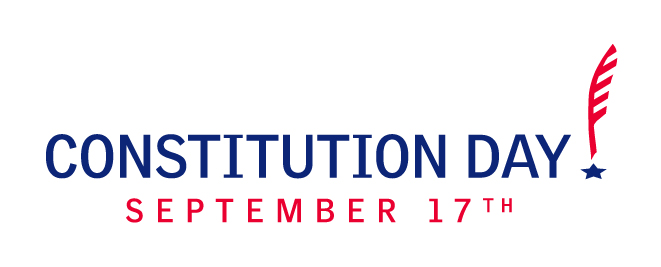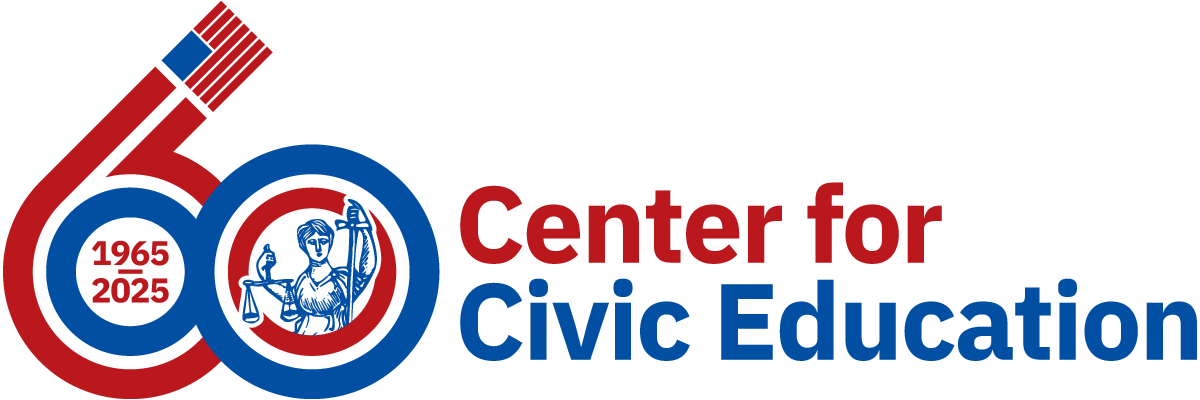
September 17 is recognized in the United States as Constitution Day and Citizenship Day. The purpose of Constitution Day and Citizenship Day is to commemorate the creation and signing of the supreme law of the land and to honor and celebrate the privileges and responsibilities of U.S. citizenship for both native-born and naturalized citizens. Federal law requires that all schools receiving federal funds hold an educational program for their students on September 17 of each year.
![]() = Download pdf file
= Download pdf file
Matching Game with the U.S. Constitution ![]()
This lesson introduces students to the Constitution. Students participate in a matching game to learn what the Constitution is and what it does for them. They will recognize key images related to the Constitution and its history.
The Constitution: The Country's Rules ![]()
In this lesson, students develop an awareness of the Constitution by exploring what it is and why it is important. Students examine their classroom rules poster as an introduction to the concept of rules and learn that the Constitution is the law of the United States.
This lesson introduces students to important facts about the Constitution and its history. Students create a thirteen-star flag and read or perform the Constitution Day Rap.
This lesson introduces the study of authority. Students learn two very important concepts: authority and limited government. Students also learn the importance of examining and choosing people for positions of leadership.
3–4
What Basic Ideas Are in the Preamble to the Constitution? ![]()
This lesson explores some ideas in the Preamble to the Constitution. Students learn that the power to govern belongs to the people who have created the government to protect their rights and promote their welfare.
3–5
In this lesson from the We the People: The Citizen & Democracy textbook, students will learn a very simple definition of democracy from Abraham Lincoln's Gettysburg Address. The lesson introduces the essential elements of a democracy, which is a country where the people have the right to make all the rules and laws either directly or by means of elected representatives. The teacher's goal for the lesson is to help students understand what it means for a democracy to be a government that is of the people, by the people, and for the people.
4–5
What Should the Representative Do? ![]()
In this lesson, students discuss how laws are made. In particular, they discuss what makes a good law, how representatives in Congress gather information about the issues requiring laws, and how their constituents feel about the issues and possible solutions. Through a public hearing simulation, students learn how difficult the decisions for lawmakers can be.
5–6
What Basic Ideas about Government Are Included in the Preamble to the Constitution? ![]()
This lesson explores some of the ideas in the Preamble to the Constitution. Students read the Preamble and develop definitions for the six key phrases in the document.
7–8
What is the Federal System Created by the Constitution? ![]()
This lesson teaches students about the federal system of government created by the Framers. Students learn about popular sovereignty, federalism, and the supremacy clause of the Constitution.
9–10
Fifty-five delegates were present at the Constitutional Convention, which was held in Philadelphia in the summer of 1787. Most students can identify George Washington, James Madison, and maybe even Alexander Hamilton. But what about the other fifty-two delegates? Who were they? How did they influence the convention? In this lesson students will familiarize themselves with the delegates by listening to a series of 60-Second Civics podcast episodes devoted to the Framers of the Constitution.
To Amend or Not to Amend, That's Been the Question…Many Times ![]()
This lesson asks students to examine recent proposed amendments to the U.S. Constitution, analyze them for public policy triggering mechanisms, and compare and contrast them to amendments that have been ratified.
How Was the Constitution Used to Organize the New Government? ![]()
This lesson explains the five major accomplishments of the first Congress. Students learn how the Constitution provided a general framework for the government.
Abraham Lincoln and the U.S. Constitution ![]()
This lesson traces Lincoln's political life during a time of constitutional crisis. It examines Lincoln's ideas and decisions regarding slavery and the use of presidential power to preserve the Union.
Citizenship and the U.S. Constitution ![]()
In this lesson students will examine the concept of “citizen” from a definitional perspective of what a citizen is and from the perspective of how citizenship is conferred in the United States. Students will discuss the rights and responsibilities of citizens and non-citizens and review the changing history of citizenship from colonial times to the present.
Responsibility and the U.S. Constitution ![]()
In this lesson, students learn about responsibility and apply the concept to segments of the U.S. Constitution.
11–12
Did the Nineteenth Amendment provide women with more than the right to vote? Which Amendment process was used? How did this Amendment affect the United States in the last one hundred years? All of these questions and many others are discussed in this lesson.
Historical Analysis of Constitutional Amendments ![]()
In this lesson, students examine one of six key amendments to the Constitution while considering their historical context. Students create timelines for each amendment that are later combined to fully evaluate and interpret how the Constitution has evolved within its historical context.
What Does Returning to Fundamental Principles Mean? ![]()
This lesson presents a series of quandaries that represent many great ideas and principles that have shaped our constitutional heritage. In each exercise, students apply principles and ideas to a contemporary issue and then take a position and defend their judgments.
What Is the Role of the President in the American Constitutional System? ![]()
This lesson examines sources of presidential power and ways that checks and balances limit presidential power. Students explain the president's constitutional responsibilities, identify checks on the president's power, and defend positions involving the exercise of presidential power.






